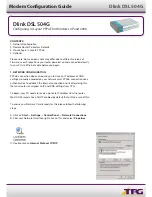
OGi Modem - Hardware Guide
© ORBCOMM Proprietary 29 T401, Version .15
4
Integration Guidelines
This section contains a number of guidelines to assist the OEM Integrator in building
their enclosure. It must be recognized that this section provides guidelines only and each
OEM Integrator must use their own discretion to finish the integration approach that
works for them.
4.1 Regulatory Guidelines
The OEM Integrator must recognize the importance of regulatory requirements for their
integrated design. These requirements can have a major impact on the product design
functioning and schedule. Further, as the regulatory requirements can be quite complex,
ORBCOMM recommends that OEM Integrators always seek the advice of a regulatory
expert prior to starting integration. This advice allows the OEM Integrator to properly
plan and schedule design and test requirements.
When the regulatory tests are defined, it is also important to identify authorized test labs
that are qualified to perform the required tests. Prior to a design, critical tests should be
identified. It is recommended that the OEM Integrator pretest any high risk critical
specifications early in the design stage.
4.2 Compliance
Refer to section 2 for compliance information.
4.2.1 Reference Power Supply
The internal power supply operates between 5.0 and 15.0 VDC. A full RF output requires
an input voltage above the minimum operating voltage.
4.2.2 Review Process
The OGi modem integration can be challenging as the modem is a sensitive receiver that
has stringent emission specifications.
To help minimize integration risk, ORBCOMM recommends that the OEM Integrator
consult with ORBCOMM and review the mechanical integration prior to starting a
detailed design.
4.3 EMI/EMC Guidelines
The modem and antenna form a highly sensitive receiver that can receive very weak
satellite or GNSS signals. The highly sensitive receiver can also pick up noise or other
interference. Components such as processors and support circuitry should be shielded
with good quality shielding. It is also recommended that RF coupling/bypass capacitors
be added to the power supply rail, as close as possible to the modem's power pin. Digital
interface devices should be shielded, and care must be taken to ensure the digital
interface cable does not run close to the antenna.















































